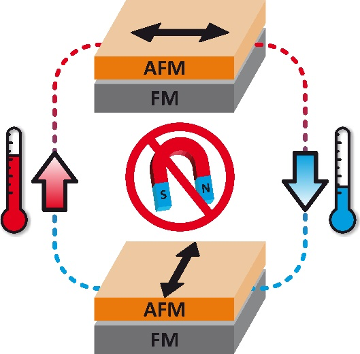A new study on magnetic properties of materials impacting information technology sector
|The atomic-scale engineering of magnetic properties of selected materials is key to information technology. Advancements in this field could lead to significant progress in the architecture and performance of electronic devices capable of higher storage density, faster access and lower power consumption. Magnetic and non-magnetic materials can be layered to build devices such as spin valves, an essential element for magnetic sensors, including modern hard disk drives. In this regard, the CERIC internal research project MAG-ALCHEMI (led by Dr. Andrea Locatelli, Elettra-Sincrotrone Trieste) aims at developing tools to control thin-film magnetism via interfacial engineering.
In a study that stemmed from the MAG-ALCHEMI project, Dr. Michał Ślęzak (AGH University), Dr. Francesca Genuzio (CERIC-ERIC), and colleagues, reported a study on the magnetic properties of an antiferromagnetic film grown on top of a ferromagnetic material. Ferromagnetic materials, beyond being a subject of fascination, have been of great practical value for thousands of years. In these materials, the magnetic moments are aligned, so that they all point in the same direction. On the other hand, antiferromagnets are materials in which the magnetic moments of neighbouring atoms point in opposite directions (they are antiparallel). In the mentioned study, a prototypical antiferromagnetic material, nickel oxide (NiO) was put in contact with ferromagnetic iron (Fe). The authors obtained spectroscopic data through X-ray Absorption Spectroscopy (XAS), while microscopy studies were performed using Spectroscopic Photoemission and Low Energy Electron Microscope (SPELEEM). The two experiments were realised at the Polish and Italian CERIC Partner Facilities at the SOLARIS synchrotron (Krakow) and Elettra synchrotron (Trieste), respectively.

The authors found that the magnetic state of the antiferromagnetic nickel oxide can be controlled by tuning the thickness of the iron layer, changing the temperature, or applying a small external magnetic field. Further advancements in this field and potential applications in the so called Heat Assisted Magnetic Recording (HAMR) can have a relevant impact in forefront technological sectors, such as spintronics. Publication has been chosen by the editors of Physical Review B journal as highlight in the Editors’ Suggestion.



